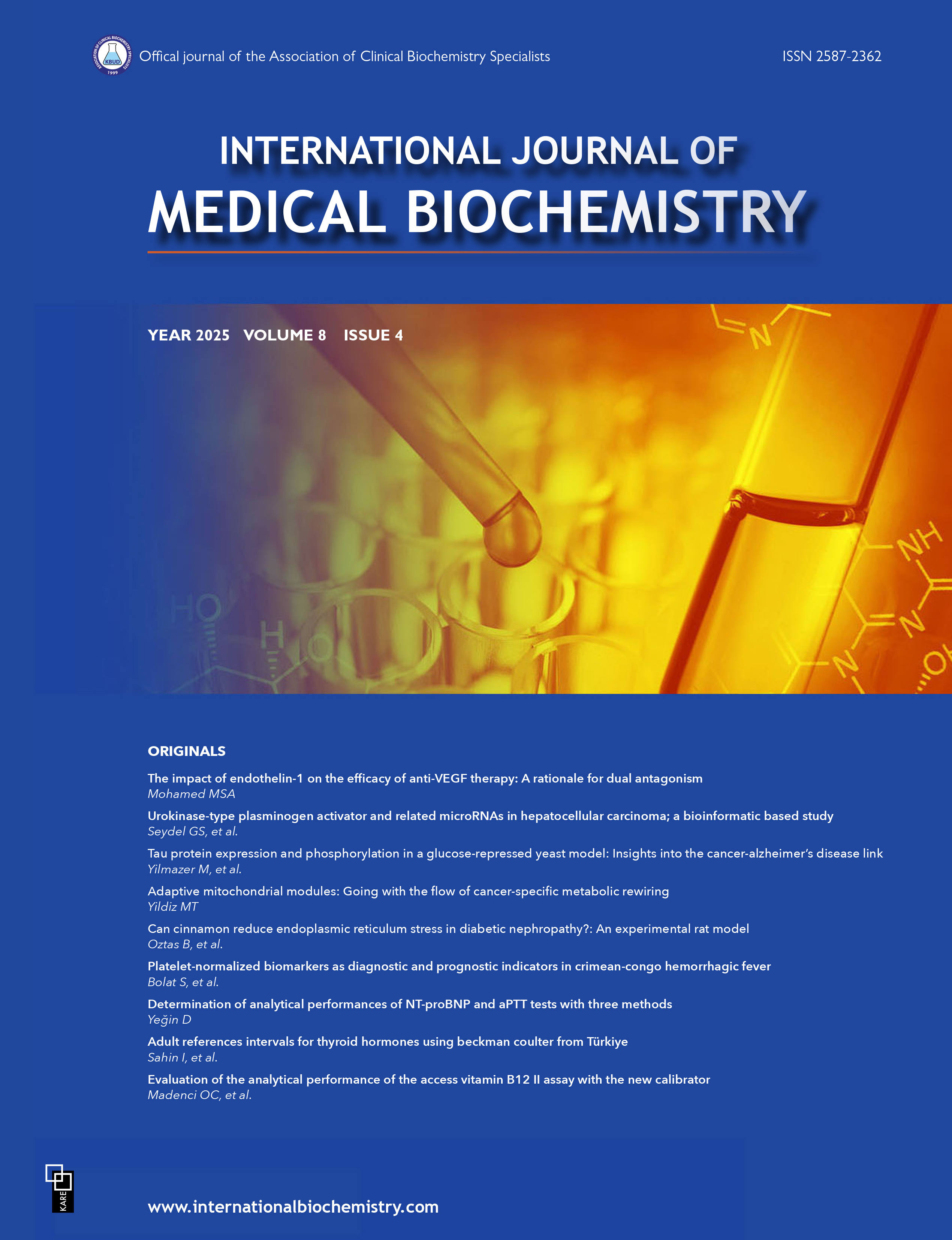Atypic separator gel flotation in blood collection tube in a patient with hyperproteinemia
Nesibe Esra Yasar1, Dildar Konukoglu21Department of Medical Biochemistry, Ministry of Health, Kars Harakani Public Hospital, Kars, Turkey2Department of Medical Biochemistry, Istanbul Univesity-Cerrahpasa, Faculty of Medicine, Istanbul, Turkey
Serum separator gel tubes are widely used in laboratories for blood collection since their advantages. These contain a gel that forms a barrier between serum and clot after centrifugation. Rarely, some conditions may arise from unusual separation patterns. In this case, the floating separator gel due to hyperproteinemia was reported. A 49-year-old woman admitted to the chest diseases department. The blood sample was collected into a gel separation tube, transported to the Medical Biochemistry Laboratory within 45 minutes and centrifuged at 1500 g for 10 minutes. The separator gel formed the topmost layer, with the serum in the middle and the clot at the bottom. The sample was re-centrifuged, but this atypical phenomenon did not change. The serum was aspirated under the gel layer by a pipette. Biochemical analyses showed markedly elevated total protein concentration (147 g/L). The patient's file revealed that she had no history of chronic disease other than chronic obstructive pulmonary disease. When consulted, the clinician informed us that the patient was directed for further examination because of the high total protein levels. Laboratories should be careful of the limitation of gel separation tubes. In addition, all samples must be visually checked before analysis, as an aspiration of misplaced gel may obstruct the analyzer probes; causing technical problems, time loss, adverse patient outcome, and extra cost.
Keywords: Blood collection tube, floating gel, hyperproteinemia, preanalytical phaseManuscript Language: English







